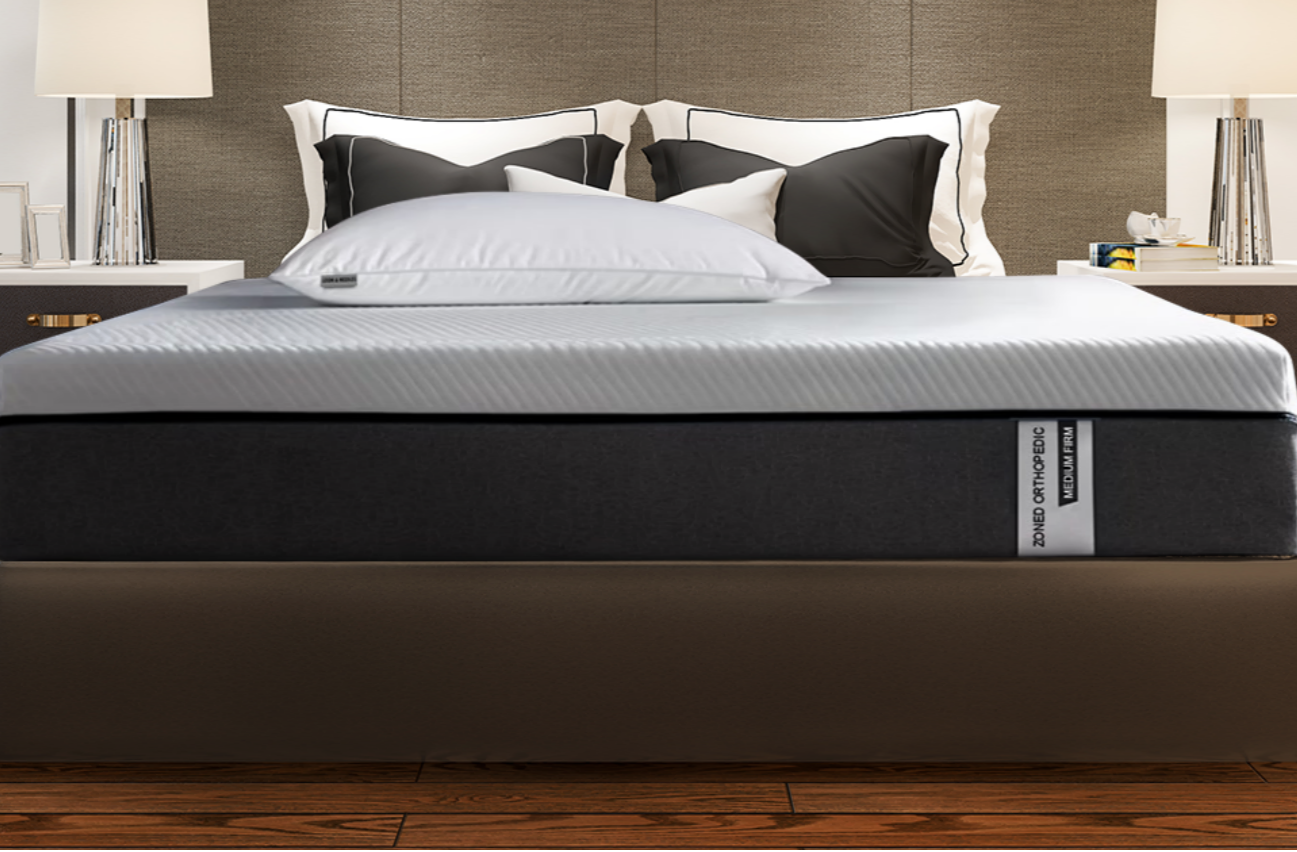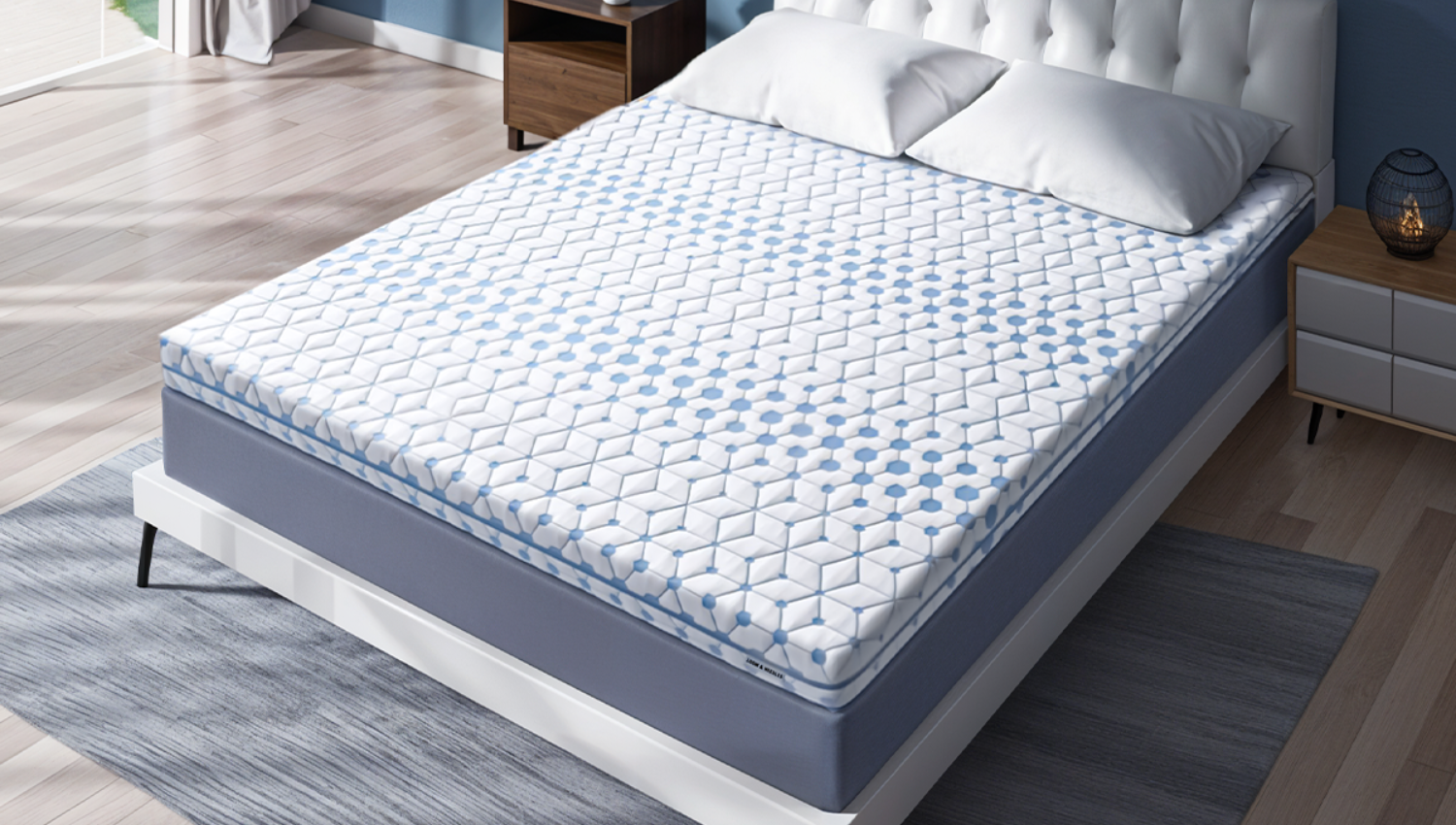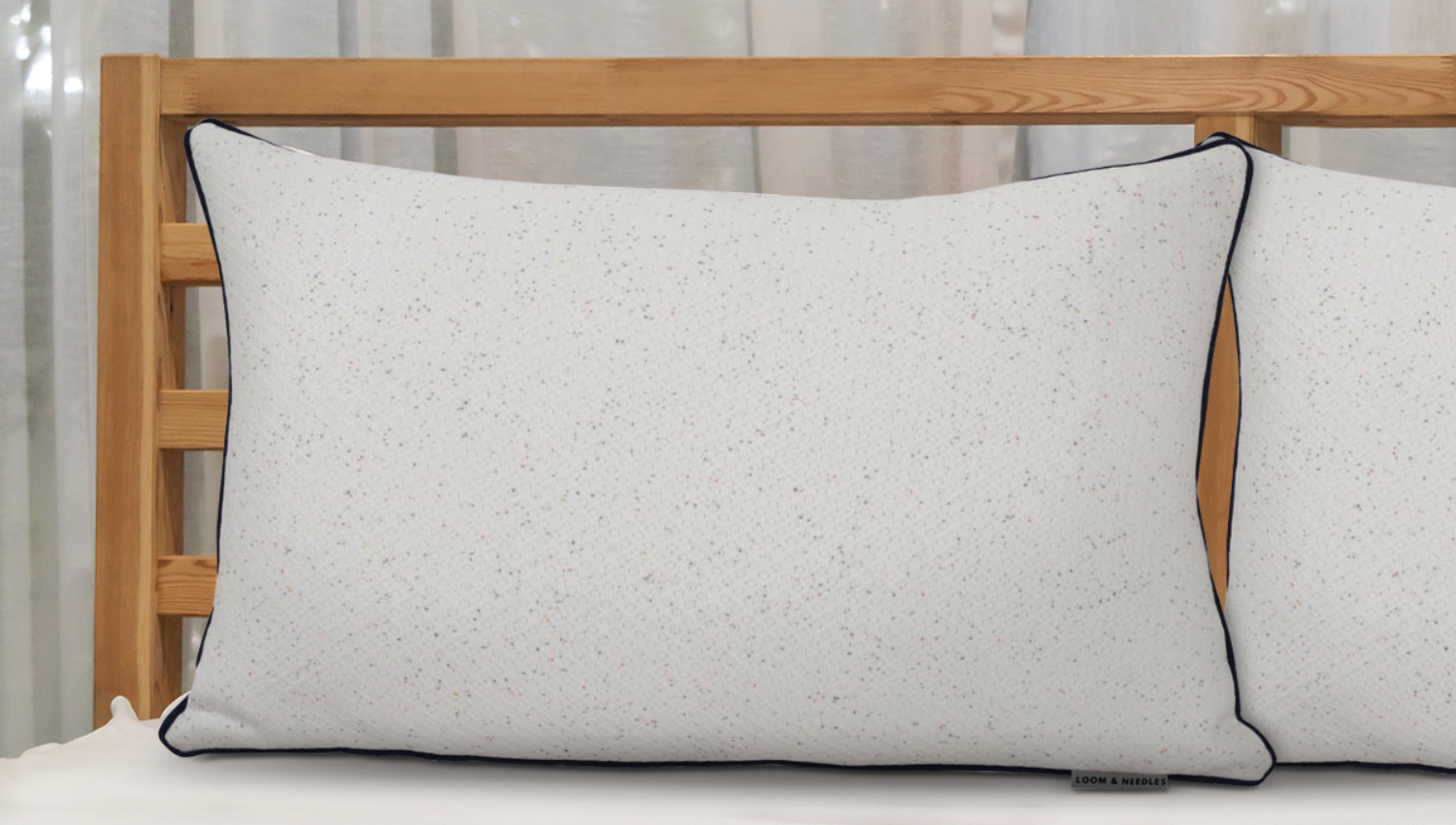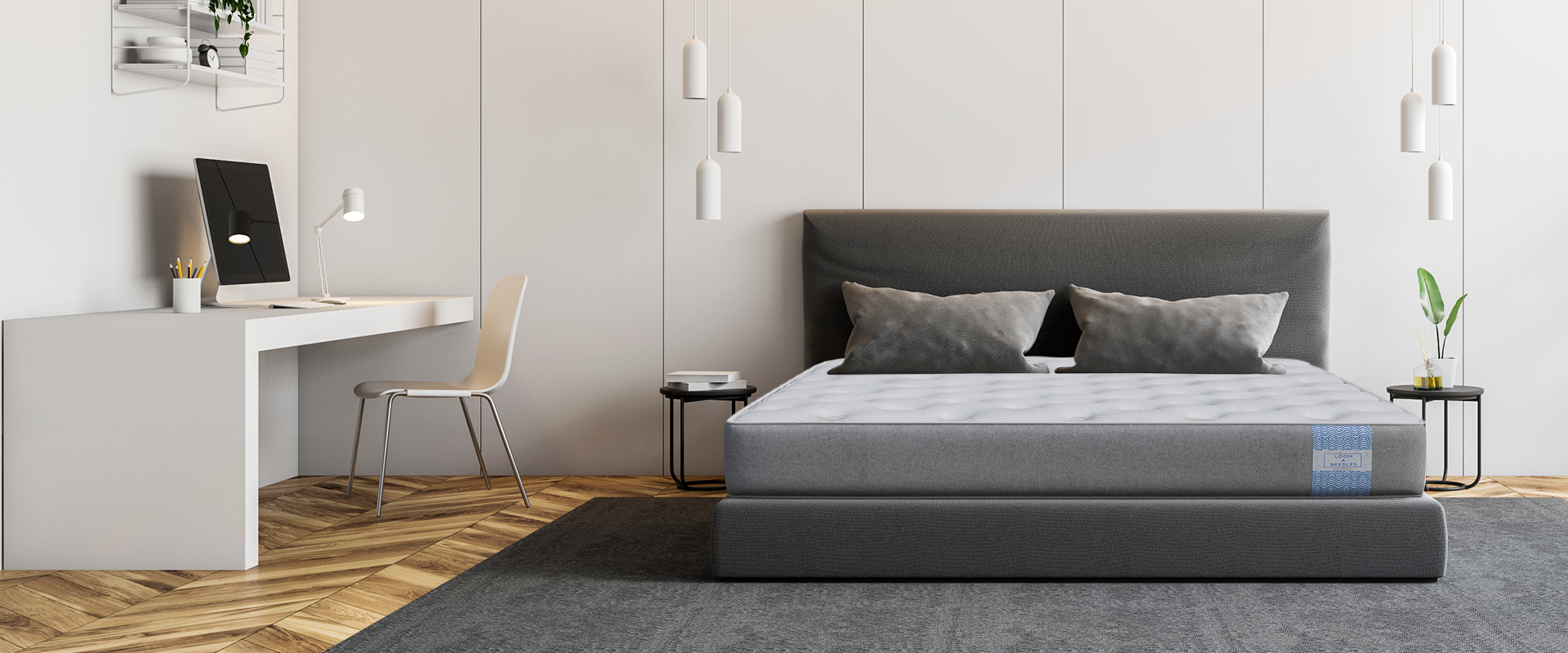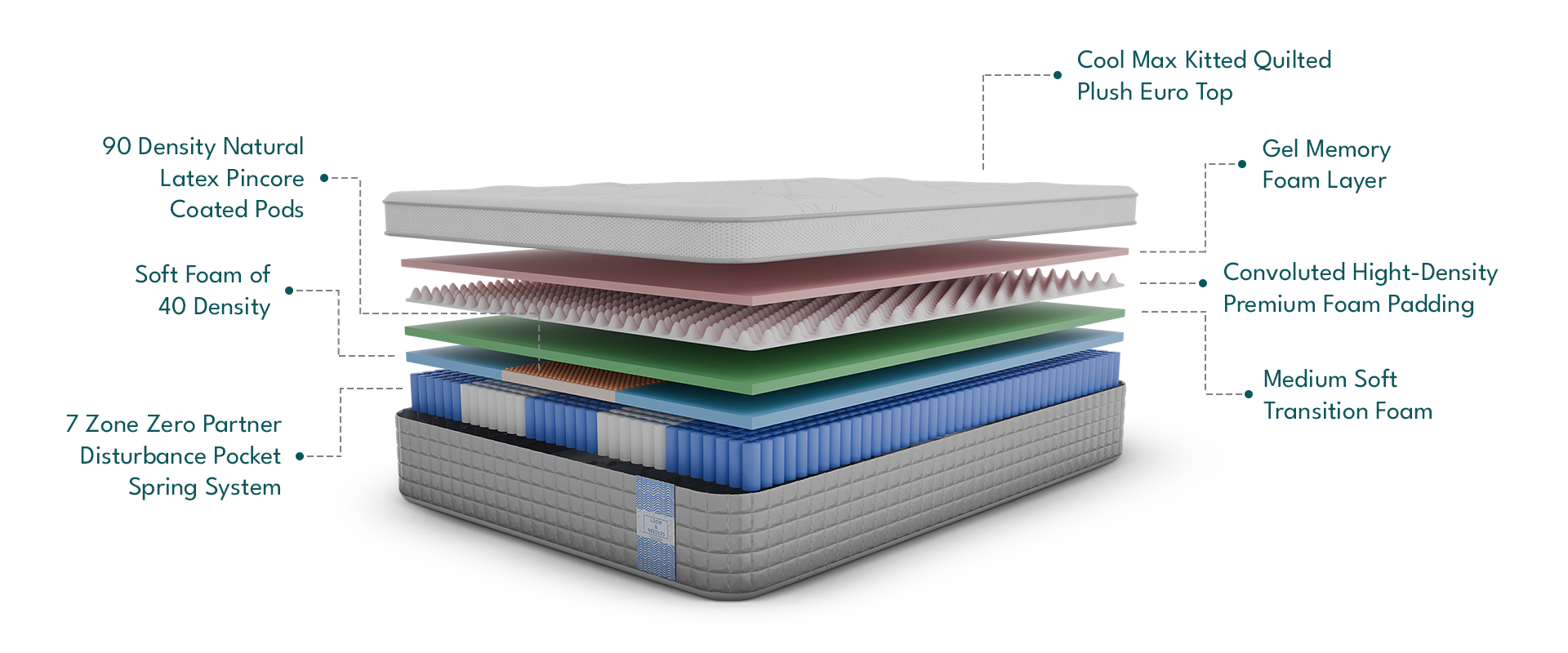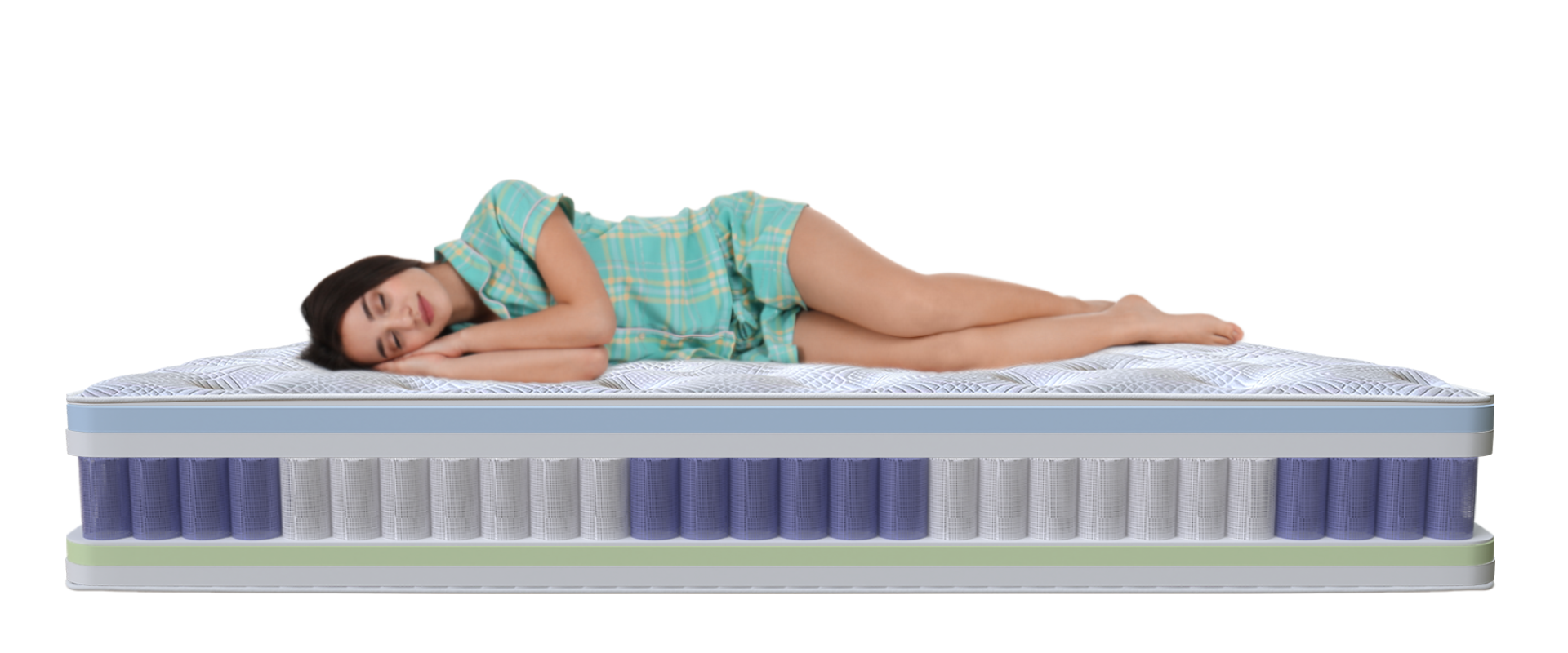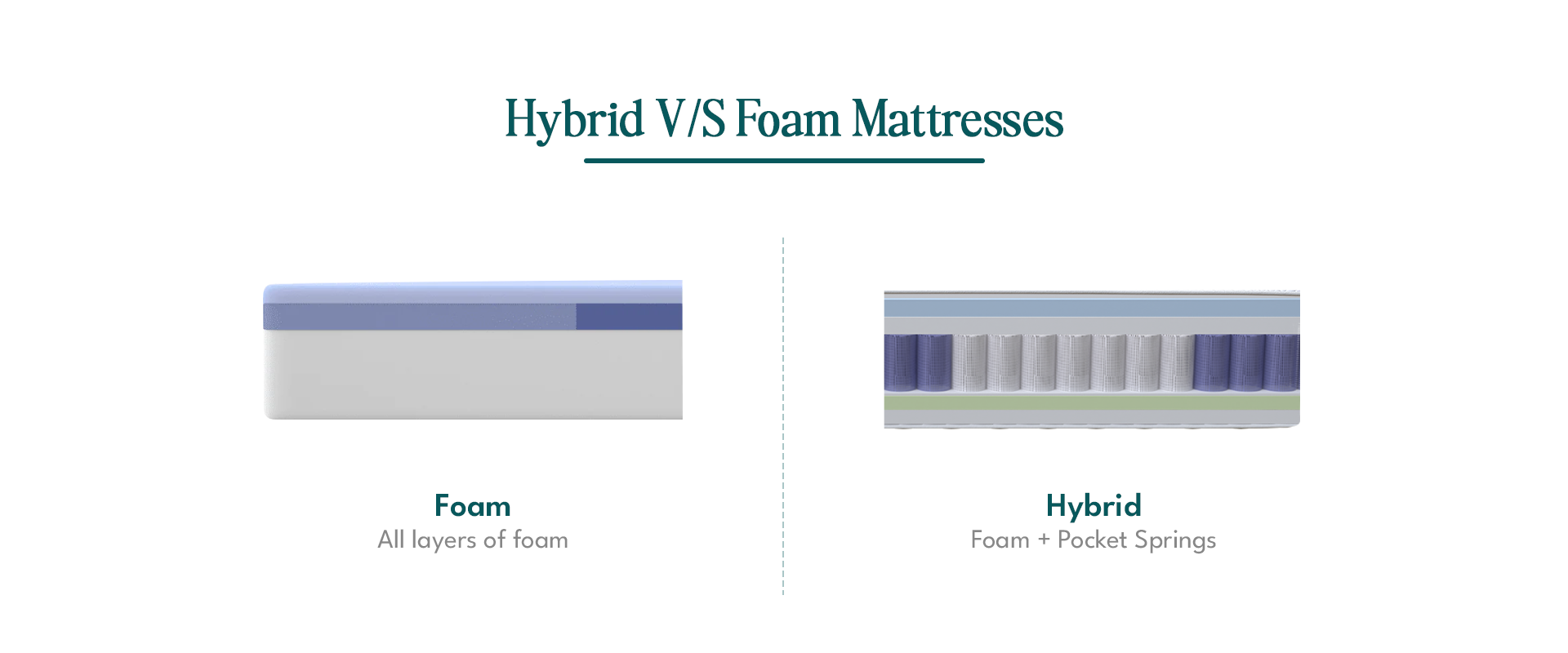Unveiling the Comfort: Understanding Hybrid Mattresses
The quest for the perfect night's sleep often leads to the question: what kind of mattress is right for me? Enter the hybrid mattress, a revolutionary design that's rapidly gaining popularity. By seamlessly blending the best features of different mattress types, hybrid beds offer a truly unique and supportive sleep experience.
Imagine the plush comfort of memory foam contouring your body, combined with the resilient support of an innerspring system. That's the magic of a hybrid mattress! It aims to provide the ideal balance of pressure relief and sturdy support, catering to various sleep preferences.
Let's take a closer look at what lies beneath the surface and makes these mattresses so exceptional:
Deconstructing the Hybrid: What's Inside?
Hybrid mattresses are carefully constructed with multiple layers, each serving a specific purpose to optimize sleep quality. Here's a breakdown of the typical components:
- Base Layer: The Foundation (Approximately 1 inch) This foundational layer, typically made of dense foam, provides a stable and sturdy base for the entire mattress. It adds overall durability and prevents the upper layers from sagging, ensuring long-lasting support.
- Support Core: The Backbone (Approximately 7-8 inches) This central layer is where the traditional innerspring system comes into play. The support core primarily consists of pocket-wrapped coils or interconnected springs. These coils are crucial for providing the following:
Spinal Alignment: The responsive nature of the springs helps maintain proper spinal alignment throughout the night.
Support and Responsiveness: It offers a supportive and slightly bouncy feel, preventing that "stuck-in-the-mud" sensation some users experience with foam mattresses.
Motion Isolation: Individually encased coils move independently, minimizing motion transfer across the bed – a significant benefit for couples.
- Comfort Layer: Where Plush Meets Support (Approximately 3-4 inches) This is the layer you directly interact with, designed for immediate comfort and pressure relief. It's typically composed of cushioning materials such as:
Memory Foam: Known for its ability to contour to the body's unique shape, providing excellent pressure relief at key points like the shoulders and hips.
Latex: Offers a more responsive and naturally cooling feel compared to memory foam. It's also known for its durability and hypoallergenic properties.
Cooling Gel: Often infused into memory foam or used as a separate layer, the cooling gel helps regulate body temperature and prevent overheating during sleep.
By strategically combining these layers, hybrid mattresses aim to deliver the best of both worlds: the conforming comfort of foam layers and the robust support and responsiveness of an innerspring system. This unique construction makes them a versatile choice for various sleep styles and preferences.
Understanding 5 Zone Comfort in Mattresses
A 5-zone comfort mattress is a type of mattress designed with varying levels of firmness across five distinct zones. The idea behind this design is to provide targeted support and pressure relief to different areas of the body, promoting better spinal alignment and overall sleep comfort.
Think of your body's weight distribution – it's not uniform. Your shoulders and hips, for example, exert more pressure on the mattress than your head or legs. A 5-zone mattress aims to accommodate these differences.
Here's how it typically works:
The mattress is divided into five sections, each engineered with a specific firmness level:
- Head and Neck Zone: Usually offers softer support to cushion the head and neck, relieving pressure and promoting proper alignment in the upper spine.
- Shoulder Zone: Often slightly softer to allow the shoulders to sink in comfortably, especially for side sleepers, preventing pressure build-up.
- Lumbar (Lower Back) Zone: This central zone is typically the firmest. It provides crucial support to the natural curve of the lower back, preventing sagging and maintaining spinal alignment.
- Hip and Thigh Zone: Offers a balance of support and cushioning to accommodate the broader and heavier hip area, preventing excessive pressure.
- Leg and Feet Zone: May have a slightly firmer or medium firmness to support the legs and feet without restricting circulation.
Decoding Your Dream Bed: Hybrid vs. Memory Foam Mattresses
Choosing the right mattress is a crucial step towards better sleep, and two popular contenders often emerge: hybrid and memory foam mattresses. While both offer distinct comfort experiences, their construction and feel differ significantly. Let's explore the key differences to help you find your perfect sleep solution.
Memory Foam: The Science of Body-Hugging Comfort
Memory foam mattresses have garnered significant attention for their unique ability to contour precisely to your body. Constructed entirely from layers of foam, including the innovative viscoelastic material, these mattresses respond to your body's heat and pressure. As you settle in, the foam softens and molds to your shape, creating a personalized cradle of comfort.
What makes memory foam unique?
- Exceptional Pressure Relief: The conforming nature of memory foam excels at distributing your weight evenly, alleviating pressure points at sensitive areas like your shoulders and hips. This can be particularly beneficial for individuals experiencing joint pain or seeking targeted support.
- Superior Motion Isolation: The dense foam layers are adept at absorbing movement. If you share your bed, a memory foam mattress can significantly minimize the disturbance caused by a partner's tossing and turning, leading to more uninterrupted sleep.
- The "Sink-In" Sensation: Many sleepers describe the feeling of lying on a memory foam mattress as "melting into" it or experiencing a gentle, supportive embrace. This can create a sense of security and deep relaxation.
- Quiet Sleep Surface: The all-foam construction ensures a virtually silent sleep experience, free from the squeaks or creaks sometimes associated with traditional spring mattresses.
Hybrid: The Harmonious Blend of Support and Comfort
Hybrid mattresses represent a strategic fusion of technologies, combining the pressure-relieving qualities of foam layers with the robust support of an innerspring system, typically featuring individually wrapped (pocket) coils. This design aims to deliver the best of both worlds: the familiar support and responsiveness of a traditional spring mattress coupled with the contouring comfort of foam.
What sets hybrid mattresses apart?
- Balanced Feel: Hybrids strive for the ideal equilibrium between the plushness of foam and the underlying support and resilience of springs. This can appeal to a wider range of sleepers with varying comfort preferences.
- Responsive Support: The innerspring system provides a level of responsiveness and a subtle "bounce" that some sleepers prefer over the more static feel of memory foam. This can make it easier to change positions during the night.
- Enhanced Airflow: The spaces between the coils in a hybrid mattress generally promote better airflow compared to dense foam, potentially leading to a cooler and more comfortable sleep environment, especially for those who tend to overheat.
- Durable Edge Support: Many hybrid mattresses incorporate reinforced edges, providing better support along the perimeter of the bed. This can prevent that "roll-off" sensation and maximize the usable sleep surface.
- A More "Lifted" Feel: Unlike the deep contouring of memory foam, hybrids often provide a sensation of sleeping "on top" of the mattress rather than sinking deeply into it.
The Bottom Line: Which is Right for You?
- Choose a Memory Foam Mattress if: You prioritize maximum pressure relief, exceptional motion isolation, and enjoy the feeling of your mattress closely conforming to your body.
- Choose a Hybrid Mattress if: You seek a balance of support and comfort, prefer some responsiveness and bounce, tend to sleep hot, or value strong edge support.
Ultimately, the ideal mattress is a personal choice. Understanding the fundamental differences between hybrid and memory foam technologies will empower you to make an informed decision and invest in the sleep experience you deserve.
Hybrid Mattress Lifespan: What to Expect
Generally, you can expect a hybrid mattress to last between 7 to 11 years. With proper care, some high-quality hybrids may even exceed this timeframe.
A good benchmark is to consider replacing your mattress every 6 to 8 years to ensure optimal support and comfort.
At Loom & Needle, we stand behind the quality of our hybrid mattresses and offer an 8-year limited warranty*, giving you peace of mind and sound sleep for years to come.
Hybrid Mattresses for Back Pain: A Concise Look
Back pain often stems from poor spinal alignment. Hybrid mattresses can help by:
- Cushioning: Targeted foam layers relieve pressure on spinal points, allowing muscles to relax.
- Supporting: Innerspring coils provide responsive support to maintain spinal alignment.
Key takeaway: The balance of cushioning and support in hybrids can be beneficial for back pain. However, choosing the right firmness level for your body is crucial.
Hybrid Mattress Cost: Finding Your Comfort Zone
A quality queen-size hybrid mattress typically costs around Rs. 20,598.00 in India, with premium models reaching up to Rs. 85,000.
At Loom & Needle, we believe exceptional sleep shouldn't break the bank. Our queen-size Hybrid Latex Pocket Spring Mattress offers comfortable support for just approximately 59% less than the average queen-size hybrid in India.
Experience the perfect blend of comfort and support with a hybrid mattress. Ready for your most comfortable sleep? Explore our Loom & Needle Dreamer and Hybrid Mattress collections.





